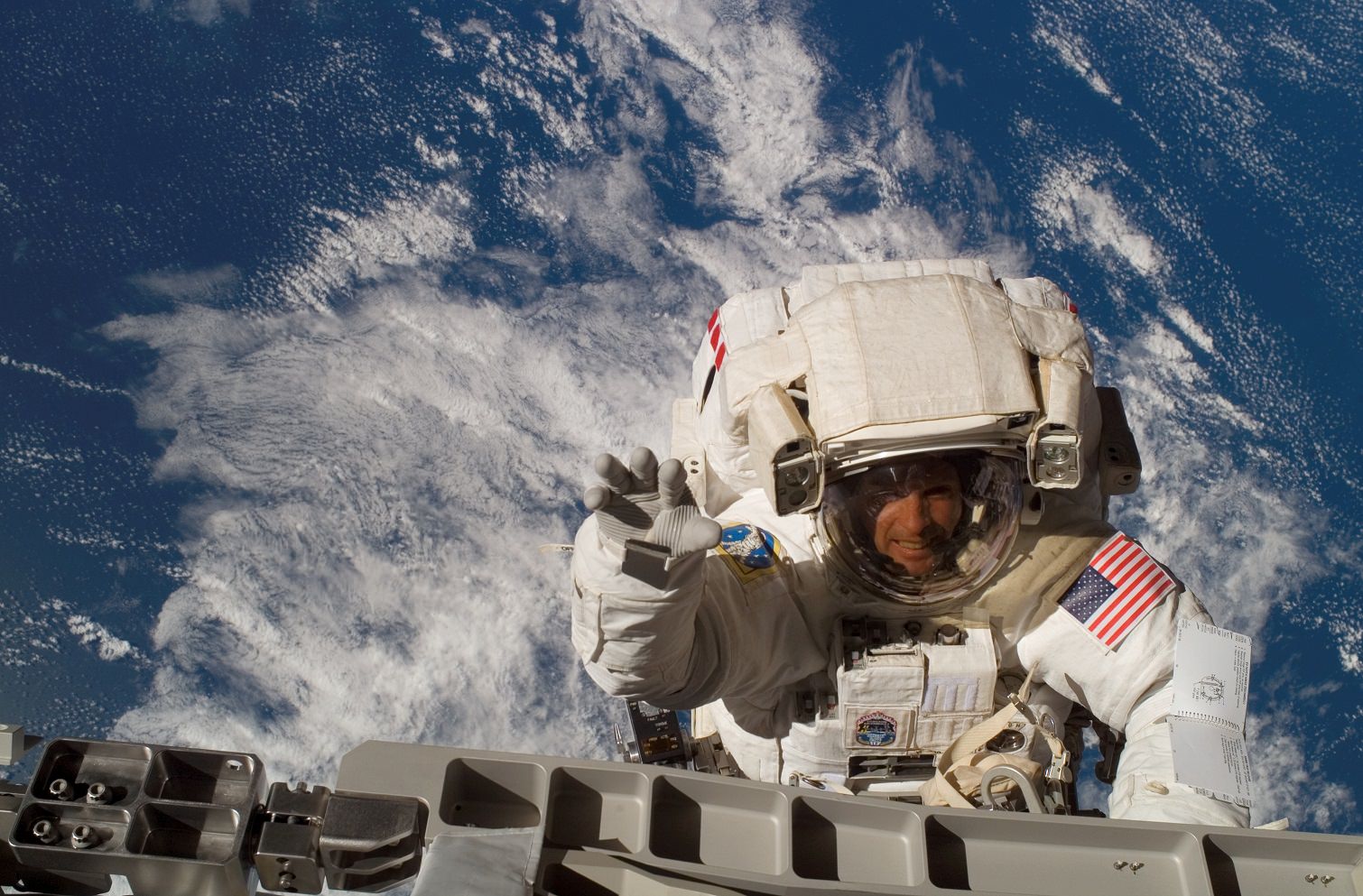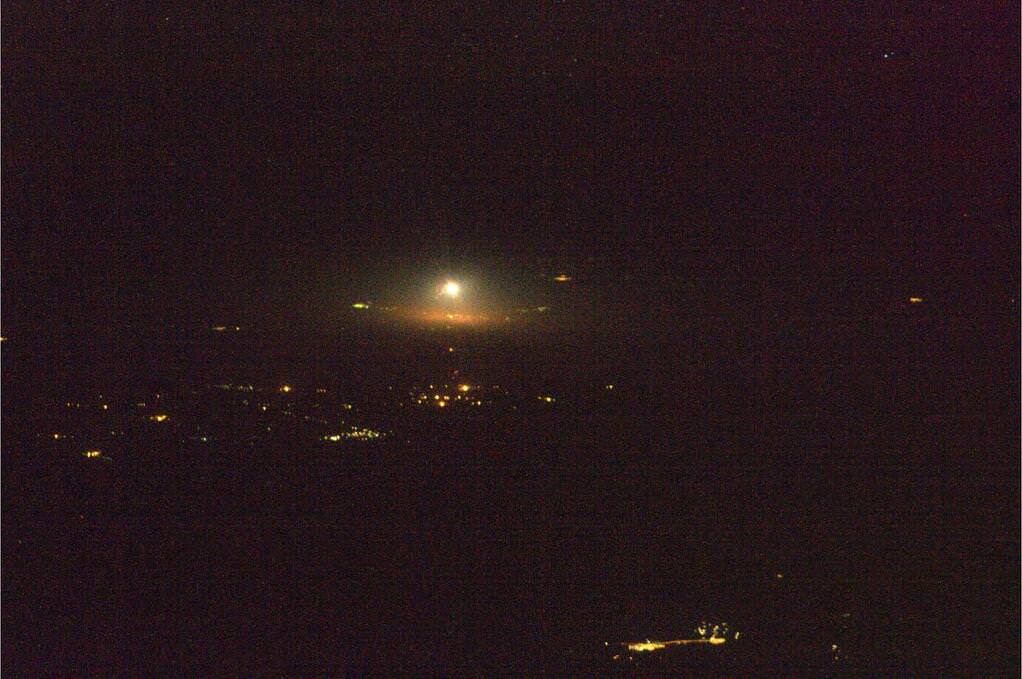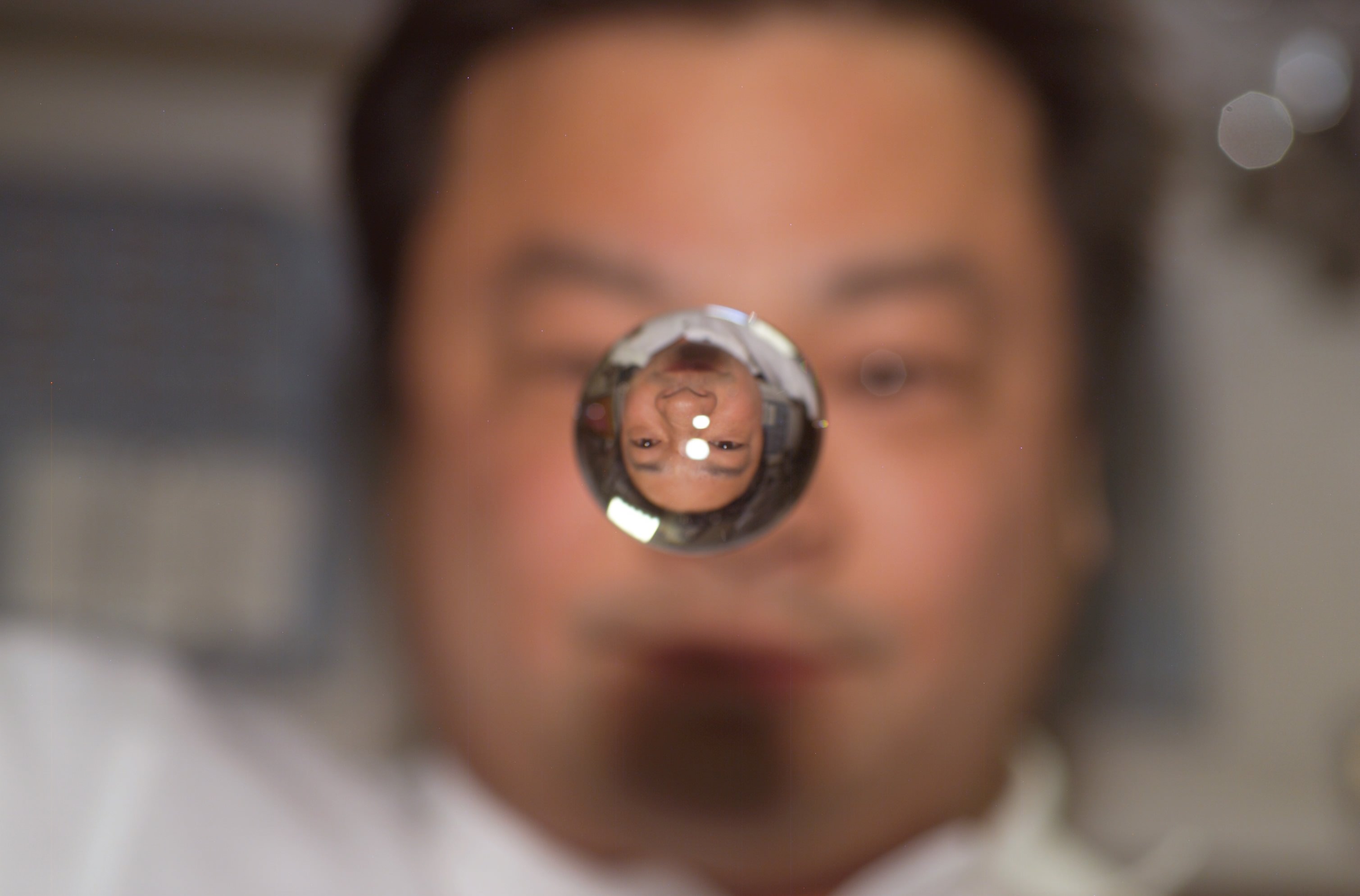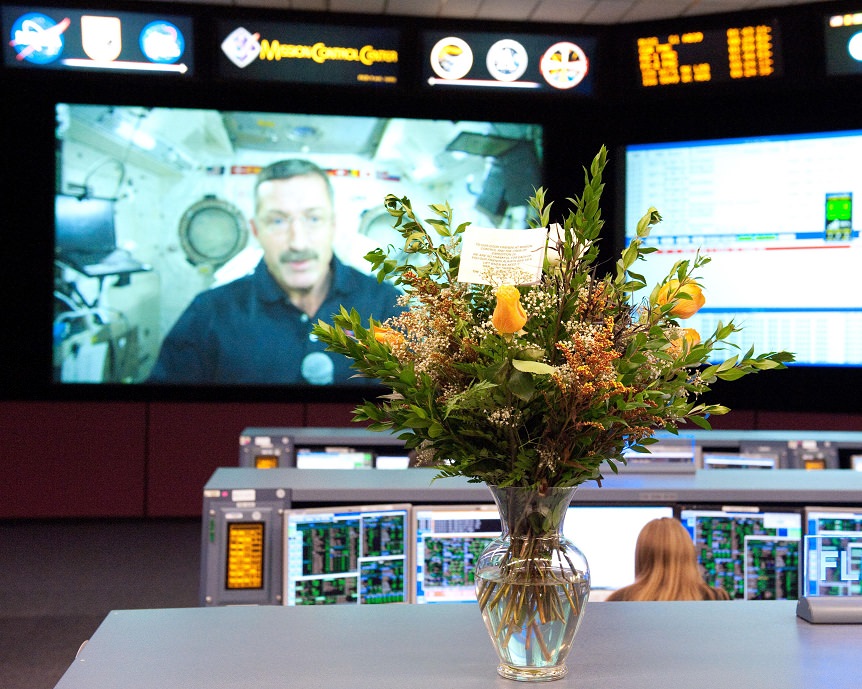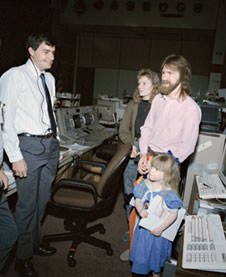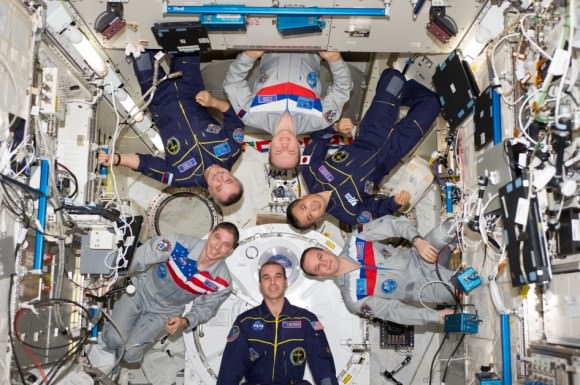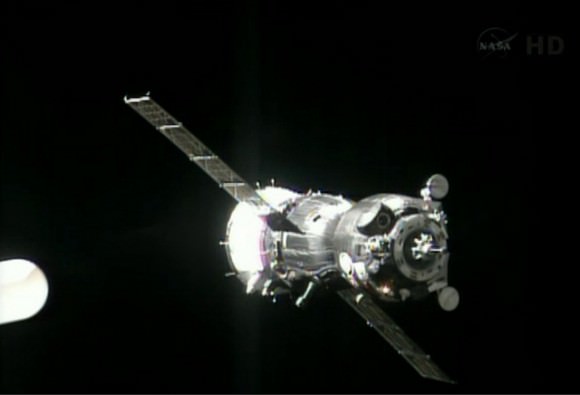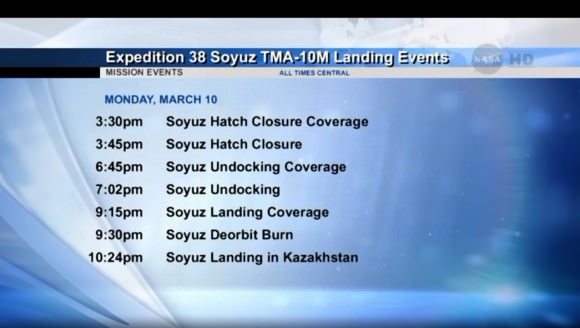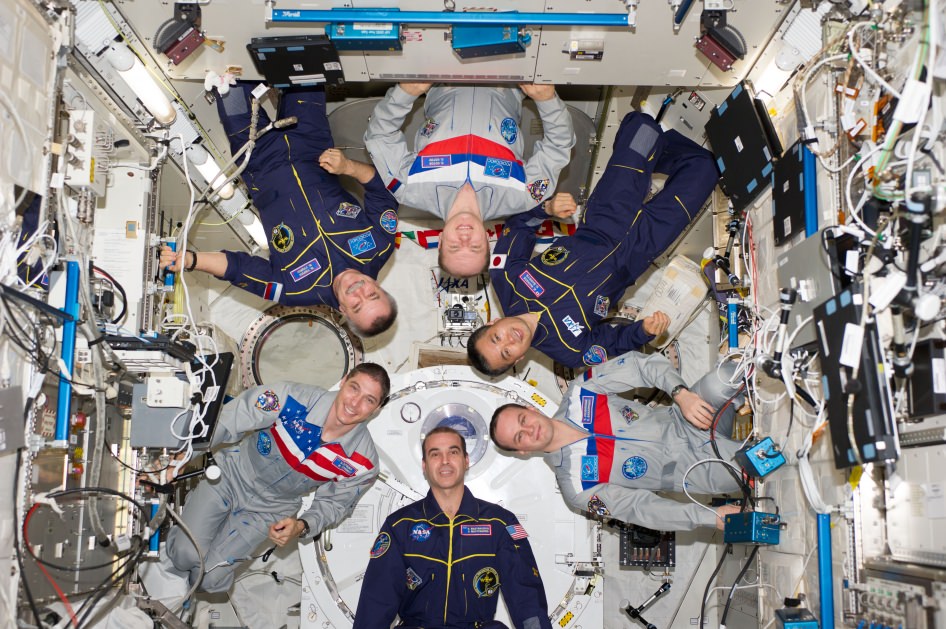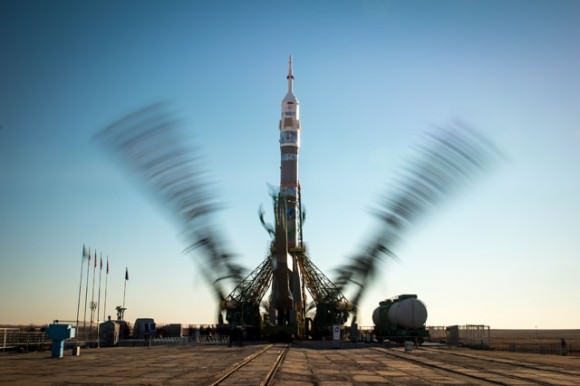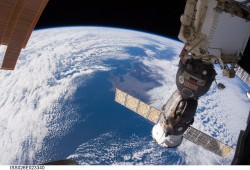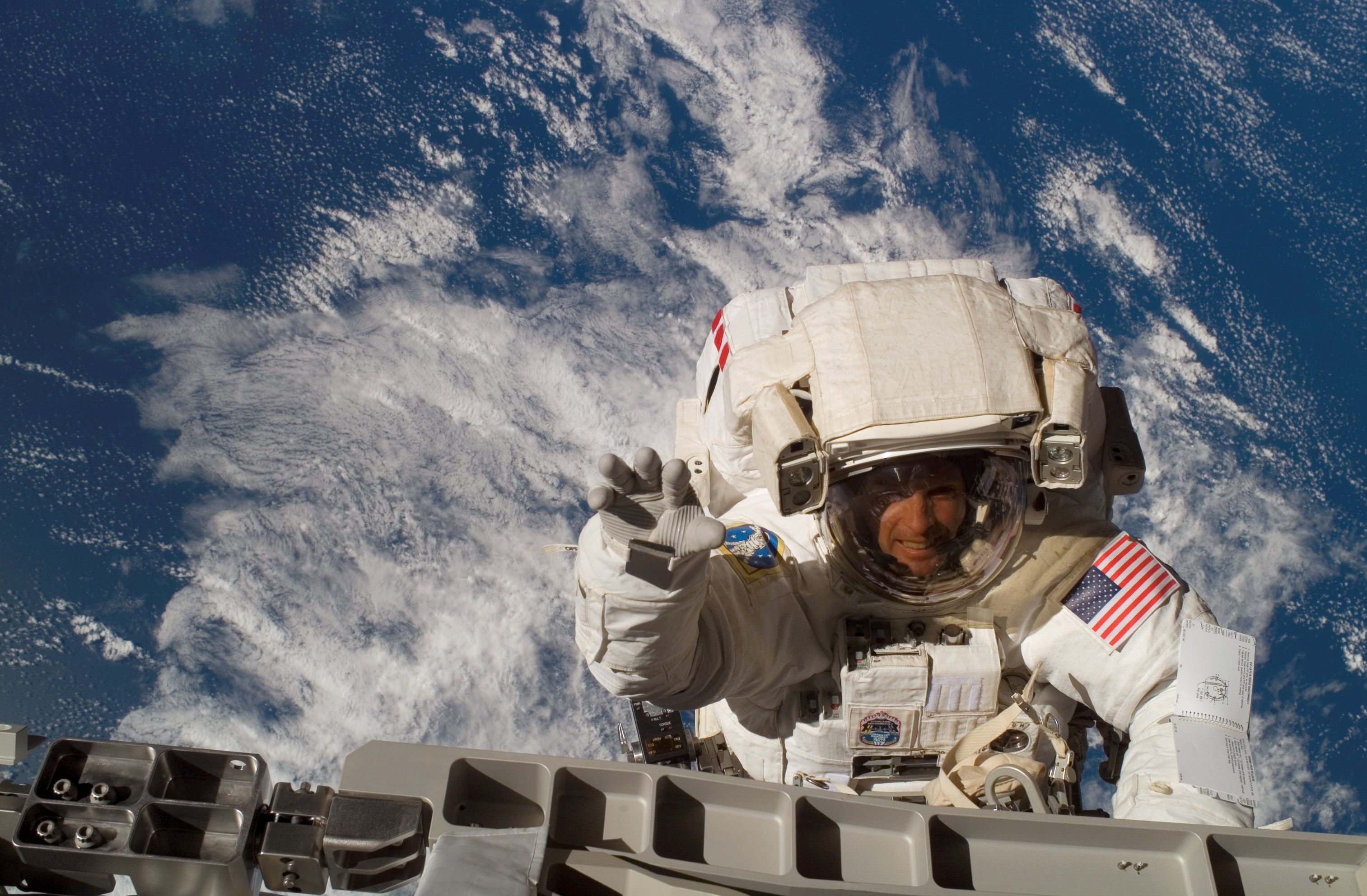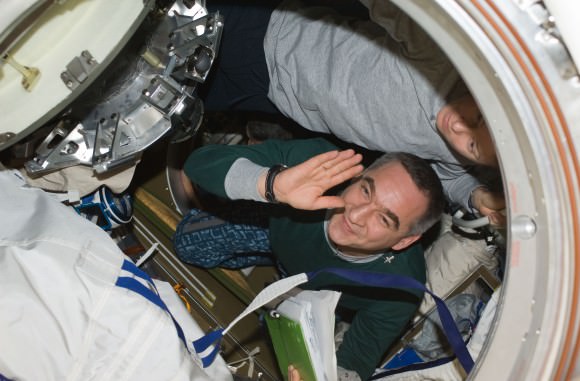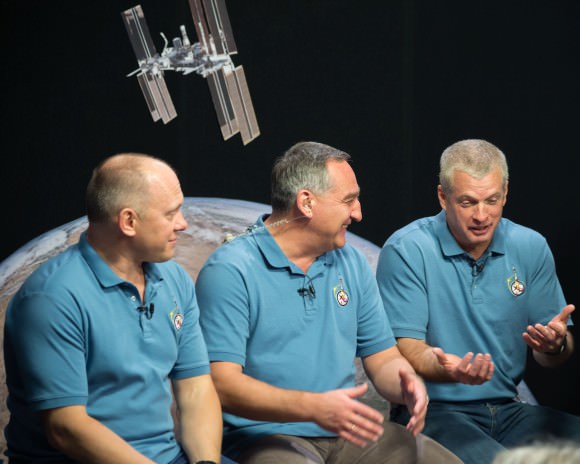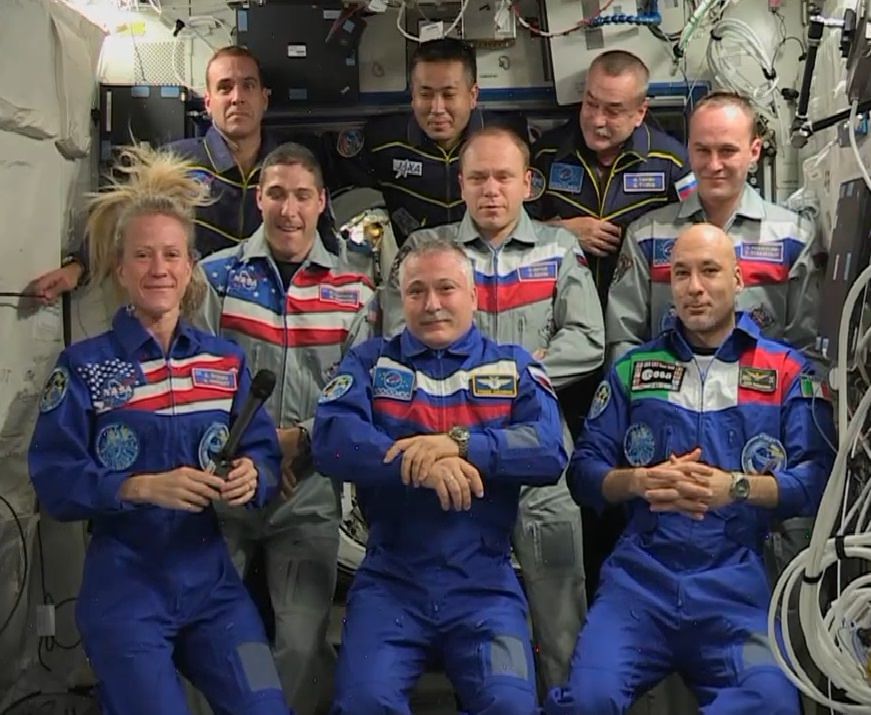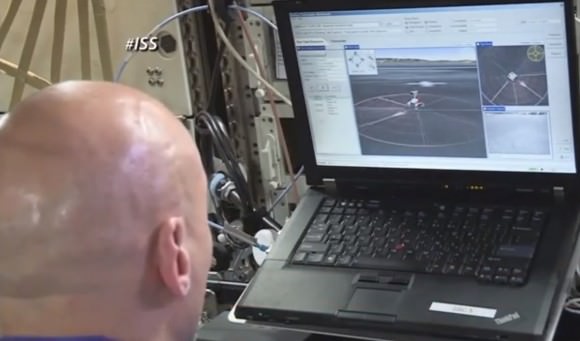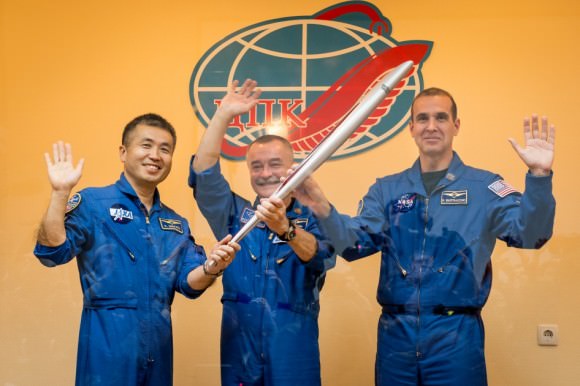Update, 10:13 p.m. EDT: Tonight’s docking with the International Space Station will not happen because one of the engine firings scheduled to happen did not take place when it was supposed to. The crew is safe, according to NASA, and going to a standard backup plan that should bring the craft to the station on Thursday (2 days from now). Roscosmos is examining the issue. We will provide updates as warranted.
Update, 6:43 p.m. EDT: The Soyuz is on its way to space after an on-time launch — and by the way, astronauts saw it leave from the space station! It’s en route and NASA is still expecting an arrival around 11:04 p.m. EDT., which you can watch live on NASA TV above.
Despite tensions on the ground between the United States and Russia, officials say that it’s business as usual on the International Space Station. The three people launching to space today, in fact, are from both countries: Alexander Skvortsov and Oleg Artemyev of the Russian Federal Space Agency (Roscosmos), and Steve Swanson from NASA.
As has been the habit lately, the Expedition 39/40 crew will take a faster route to the International Space Station that see launch and docking happen in the same day, should all go to plan. It all begins with the launch at 5:17 p.m. EDT (9:17 p.m. UTC) from the Baikonur Cosmodrome in Kazakhstan, with docking scheduled to happen at 11:04 p.m. EDT (3:04 a.m. UTC).
Bear in mind that schedules are subject to change, so it’s a good idea to watch NASA TV (see video above) well before each milestone to see if things are happening on time. Once the crew arrives at station, one big question is if they’ll do spacewalks when they get there.
Last July, Italian astronaut Luca Parmitano experienced a severe water leak in his NASA spacesuit that sent the crew scrambling back to the station. While Parmitano emerged physically all right, the agency opened an investigation and suspended all non-essential activities. A report was issued in February and the agency pledged to deal with all the urgent items quickly.
Spacewalks are planned for Expedition 40, but only if these urgent items are cleared in time for that. (That expedition begins in May and will include NASA astronauts Alex Gerst, Reid Wiseman and Russian cosmonaut Maxim Suraev.)

